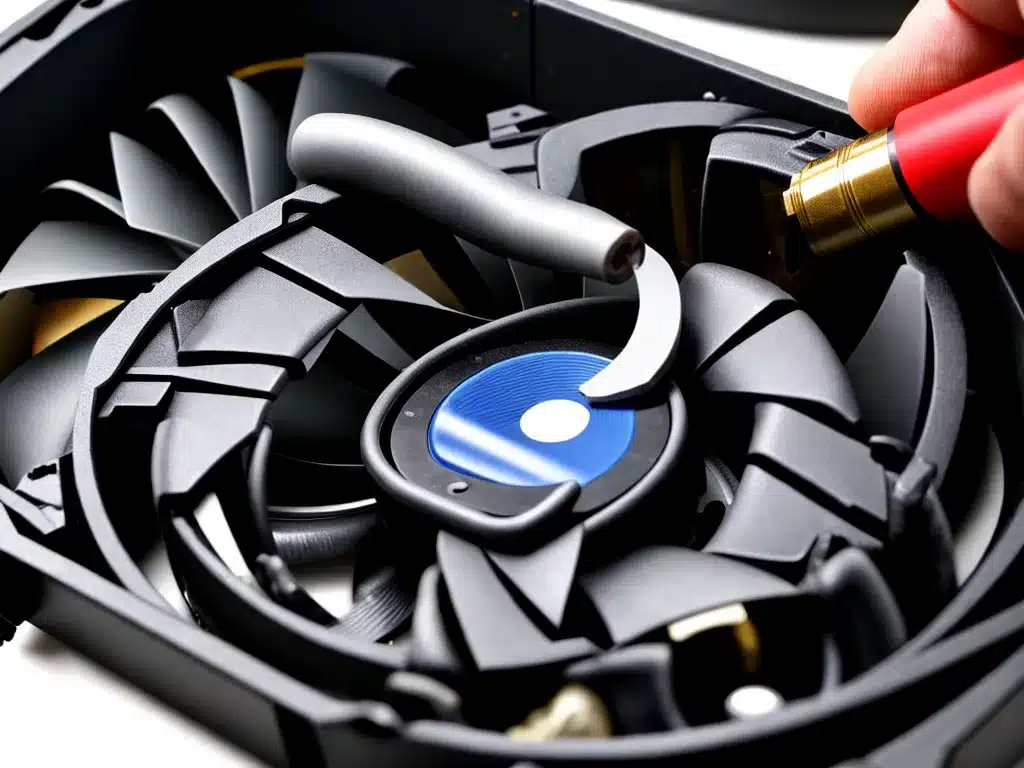
What is Coil Whine?
Coil whine is a high-pitched noise that can come from your graphics card (GPU). It happens when the coils on the card vibrate at a frequency that is audible to the human ear. The noise can range from a faint squeal to an annoying whining or screeching sound.
Coil whine typically occurs when the GPU is working hard, such as when gaming or running graphics-intensive programs. The vibration is caused by rapid changes in power flowing through the coils as they regulate the voltage on the card. More power flowing through the coils leads to faster vibration and a higher pitched noise.
While annoying, coil whine is generally not harmful to your GPU hardware. It is primarily an annoyance for users. With some troubleshooting, there are ways to reduce or eliminate the bothersome sound.
Potential Causes of Coil Whine
There are a few primary causes of coil whine from a GPU:
-
GPU load – More intense graphics tasks cause the coils to work harder and vibrate more. High frame rates in games create more fluctuations in power.
-
Power supply – Noisy, low-quality, or inadequate power supplies can contribute to coil whine by delivering unstable power to the GPU.
-
GPU components – The quality of the coils themselves as well as the capacitors on the graphics card can affect the tendency for coil whine.
-
Motherboard components – Other components on the motherboard, like the voltage regulator modules, may also play a role in creating the conditions for coil whine.
So in summary, components on both the GPU itself as well as the rest of the system can influence the presence of coil whine noise.
How to Reduce or Stop Coil Whine
Here are some troubleshooting tips you can try to alleviate coil whine from your graphics card:
1. Lower the Frame Rate Cap
If you have excessive FPS (frames per second) in games, try lowering the frame rate cap. For example, limit FPS to your monitor’s refresh rate. This reduces the workload on the GPU and the rapid fluctuations in power that can cause whining coils.
You can set a global FPS limit in your GPU control panel. You can also often cap FPS within individual games.
2. Turn Off Vertical Sync
Vertical sync (vsync) helps match your FPS to the monitor’s refresh rate. This also stabilizes the load on the GPU. Turn off vsync in games and in your GPU settings to see if it makes a difference.
3. Clean Power Delivery
Make sure you are using a high-quality power supply that can deliver clean and stable power to your graphics card. If necessary, consider upgrading the PSU. Also make sure that the PCIe power cables are not daisy-chained together and instead use two separate cables from the PSU to the GPU.
4. Improve Case Cooling
Better airflow and lower temperatures in your case can reduce coil whine. Make sure your case fans are clean and consider adding more fans or switching to higher CFM models. Clean dust buildup off the graphics card itself as well.
5. Adjust Clock Speed
Undervolting or lowering the clock speeds of your GPU may help reduce coil whine. You can experiment with this by adjusting the clock speed curves in utilities like MSI Afterburner. Just watch for system instability.
6. Isolate Components
Use silicone grommets or other isolators to decouple the graphics card from the motherboard and case. This prevents vibrations from spreading. You can also pad the graphics card in the case to dampen vibrations.
7. Replace the Card
If all else fails, replacing the graphics card itself may be needed to resolve persistent coil whine. Look for cards with quieter coil designs from reputable board partners.
Examples of Fixes
Here are some real examples of methods people have used to alleviate coil whine in their system:
-
“I switched from a cheap generic PSU to a Corsair RM850x and it got rid of most of my coil whine.”
-
“Limiting FPS to 120 in the Nvidia control panel since I have a 120Hz monitor helped with whine while gaming.”
-
“I added silicone spacers between the corners of my GPU and the case. It dampened the noise quite a bit.”
-
“Undervolting my card with MSI Afterburner completely got rid of my coil whine.”
When to Take Further Action
In rare cases, loud or persistent coil whine can actually be indicative of a defective graphics card or other faulty component. If you still experience excessive coil whine even after trying the troubleshooting tips above, you may need to replace the graphics card or other system components. Prolonged loud coil whine may also lead to premature failure of your GPU.
Contact the manufacturer for a replacement if the coil whine persists after all other steps, as it may be covered under warranty. Be prepared to demonstrate and document the coil whine from your card.
In summary, coil whine is a common annoyance but not typically harmful. A few tweaks like capping FPS, replacing the PSU, improving case airflow, and undervolting can often resolve or reduce the bothersome noise. But excessive whining may require replacing defective hardware for a permanent fix.












